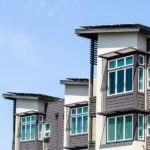What to Look for if You Suspect Termites
Termite damage is one of the most dreaded homeowner issues. You can have nightmares imagining millions of tiny pests chomping away at the structure of your home while you sleep. It is also easy to imagine the damage resulting in thousands, if not tens of thousands, of dollars in-home repairs before you realize you have an issue. Such concerns are not without foundation. Termites account for $5 billion in property damage each year in the United States, according to the National Pest Management Association (NPMA). Around 600 thousand homes each year are subjected to termite damage. But termite infestation does not have to be a serious threat to your home. Even if termites have established a foothold, you can address the problem rather inexpensively, assuming you check regularly and do not wait long to take action. First, you have to know what to look for. Second, if you find evidence of termites, immediately contact an exterminator for professional termite control services.
Three Common Termite Types
The NPMA says subterranean termites are the most destructive termite species in America, and a USDA study indicates they find southern pine and spruce most to their tastes. The other main types of termites in the U.S. are dry wood and damp wood. Each type of termite can be found in California, and each goes about its destruction in a slightly different way. You must be vigilant in looking for signs of damage for each termite type. Dampwood termites are found primarily in areas with a lot of coniferous trees (redwoods, pines, firs, spruces, etc.). As their name implies, dampwood termites prefer fallen trees that hold a lot of moisture. If the area around your home is damp, you could be susceptible to dampwood termites. Drywood termites are more prevalent in the southern part of the state where it is drier. But they can live in the wood of your home, such as in the attic, where there is little moisture. Subterranean termites can live just about anywhere and are the most likely culprit if you detect damage.
Five Common Termite Indicators
Termites have evolved for many millennia to become nothing more than eating, reproducing machines. If you have them in and around your home, there is a chance you will never see them. But it will not be hard to find evidence of them.
1. Wood Damage
This is the most common way to determine if you have termite damage, but do not count solely on doing an eyeball test. A lot of termite damage to wood is beneath the surface and therefore not immediately obvious. And even if you see holes in wood, it does not mean they were caused by termites. (Not that such damage is something you should ignore.)Drywood termites often create tiny holes in wood to expel their feces, but they only need holes in the size of a pinprick to do so. Be mindful of other telltale indicators of termite presence. For example, if a baseboard breaks off easily or if it seems to be hollow in places, that can indicate termite damage. Use a tool like a flathead screwdriver or a butter knife to poke and prod the suspected area. If it gives easily under a moderate amount of pressure, the wood beneath the paint could have been eaten away by termites. The paint may be the only thing keeping the baseboard from disintegrating.
Other questions to ask as you investigate include:
- Does your flooring sag in spots?
- Does it give way easily when you step on it?
- Do you see fresh cracks in walls, beams, or rafters?
- Do windows and doors that once opened and shut easily now get stuck?
- Does wood that should be solid sound hollow when you tap on it?
- Has paint on wood surfaces (interior or exterior) begun to warp?
If you answer yes to any of these questions, it still does not mean you have termites. Anything from excess moisture to movement in the earth could be the cause. However, it means you should investigate further.
2. Evidence of Swarms
Termites don’t just crawl. They fly, and they often do so in swarms. At certain times of the year, particularly in the spring and early summer when temperatures rise, termites swarm as they go in search of mates. Though you may never actually see the swarm, you can look for other telltale signs such as an accumulation of termite wings on the floor.
3. Mud Tubes
If you think you have nothing to worry about because your home’s exterior is made of brick or other non-wood material, don’t dismiss the danger so fast. Masonry does not stop termites, which will go to great efforts to reach a food source. If you see small trails crossing the foundation of your home, for example, it could be a termite conduit. Subterranean termites build tunnels to get from their underground homes to wood. They do not like to be out in the open and exposed should they become another creature’s dinner. Therefore, they will build narrow tunnels of mud and/or wood particles along masonry or other surfaces to reach their food. Mud tubes are a sure sign of subterranean pests trying to find a way into your home through breaks in the foundation. If you see what looks like a mud tube, it may no longer be active, or it could only be an exploratory tube that goes partway along the surface. Poke a little hole in the middle of the tube and then come back a few days later to see if termites have fixed it. If so, you are dealing with an active tunnel.
4. Frass
This unusual word is the scientific term for termite droppings. You may see a pile of fine granules on the floor and wonder who tracked sand in the house or who has been sawing lumber. You may see the same thing on a windowsill. Look closer, because it may be frass instead of sand or sawdust. Termite frass will be in various shades of brown and yellow, and it will be shaped like tiny oblong pellets. Do not immediately panic and head to the bank for a home repair loan. Even if you see frass now, it does not mean wholesale destruction within your walls has already occurred.
5. Strange Sounds
This is perhaps the most uncommon indicator of termites, but it is possible to hear them inside your walls. Listen closely for clicking or rustling sounds. It is not termites chomping away at wood, but it may be the sound of them hitting their heads against the inside of the wall. Termites can’t hear you, but they can feel vibrations. They bang their heads to alert their cohorts to potential danger.
EPA Recommendations
If you find no evidence of termites, that’s great. But do not assume you will never have a problem. According to the Environmental Protection Agency (EPA), you can perform a handful of simple steps to reduce that possibility.
- If your home is new or if you have had construction performed recently, there may be bits of wood and sawdust leftover near the foundation. Such debris can be inviting to termites, so make sure it is thoroughly cleaned up and dry near your home’s foundation.
- Fix cracks immediately. Caulk and seal around holes for cable and other lines that enter your home.
- Do not plant trees and shrubs too close to the structure. Shoots can grow into the exterior wall, which can give termites a ready subway into your home.
- Keep stacks of firewood or lumber away from the house.
- Regularly be on the lookout for issues.
Next Steps
Let’s assume a negative case scenario. You discover what appears to be evidence of termites. It is still a good idea to call in an expert to confirm it. And while some other types of bugs can be killed by homeowners with do-it-yourself pest control kits, too much is at stake with termite infestation to leave their eradication to anyone but a state-licensed, professional exterminator. You will see products in stores on the Web that promise to address termite problems, but this can be like throwing money away. Compared to the damage termites can do to your home, professional termite treatment is relatively inexpensive and well worth the peace of mind you will receive from knowing experts are on top of the issue. mighty mite Termite Services is a state-licensed exterminator in the Bay Area that can provide natural solutions for termite control that are safe for you, your pets, and the environment. The natural approach to termite control also minimizes inconvenience to you and your family. If you have a termite infestation, MightyMite Termite Services has the expertise to do the job right. For example, you may need a direct, indirect, or a combination of approaches. As a result of a thorough inspection, MightyMite can determine the right approach for your situation.
Set up a free termite inspection today by contacting MightyMite Termite Services at your convenience!
Source:
*http://ipm.ucanr.edu/PMG/PESTNOTES/pn7415.html
*https://agresearchmag.ars.usda.gov/2015/nov/termites/
*http://npmapestworld.org/newsroom/industry-fact-sheet/
*http://www.wikihow.com/Spot-Termite-Damage
*https://www.epa.gov/safepestcontrol/termites-how-identify-and-control-them







